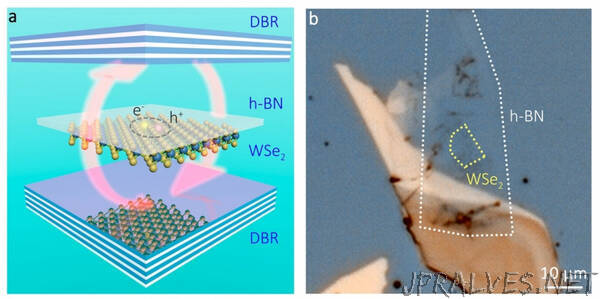
“We live in a world of portable blood glucose monitors, smart clothes, tiny sensors, and nanometer chips. All of that is not the limit, especially with the appearance of 2D materials based on dichalcogenides of transition metals. However, these materials are still hardly applicable in low temperatures. Read on to discover how researchers from ITMO have suggested this problem could be solved.
Promises of 2D materials
According to Moore’s law, the number of transistors that can fit into a processor doubles every year – and, excluding some small deviations, this has been for over fifty years. However, some researchers posit that there will be a time when this number simply won’t be able to double: by 2060, the chips would have to be the size of an atom to get any smaller, which is ruled impossible by quantum mechanics.
Nevertheless, latest discoveries demonstrate that one atom is the minimum possible thickness of low-dimensional materials. Graphene and silicon, traditionally used in electronics, won’t be suitable for such materials – and that’s where 2D materials from photonics and optoelectronics come into play. For instance, dichalcogenides of transition metals have already been used to design lasers, optical switching devices, and one-atom-thick nonlinear optical elements.
Moreover, dichalcogenides in 2D materials are rather pliable, which enables their application in flexible electronics: they can be built into clothes as personal electronic devices or implanted under human skin as medical sensors.
Challenges in application
2D materials have the thickness of a single atom and are similar to graphene, but have a different composition and geometry, as well as demonstrate semiconductor properties. Moreover, they interact with light, which means they can be used to develop electronic devices such as lasers. However, such applications are not easy to implement because their extreme thinness leads to strong Coulomb interactions, which means that electric charges within the material are strongly attracted to one another. That’s why optical responses of such materials are defined by excitons – bound states of electrons and electron holes. These states are similar to hydrogen atoms, but instead of the nucleus there is a positively charged hole with an electron orbiting it.
According to one classification, there are dark and bright excitons. Contrary to the latter, dark excitons have nearly no interactions with light, which renders them useless in the production of optical devices.
This brightening of dark excitons in low temperatures is one of the crucial tasks of photonics and optoelectronics. One solution is to subject the material to a strong magnetic field; however, it is neither affordable nor practical, because a power-intensive superconducting magnet the size of a room would be needed to produce a small laser.
Solutions by ITMO researchers
Three years ago, physicists from ITMO University came up with another . They suggested using a system in which the lowest energy state corresponds to a dark exciton and the highest – to a bright one, and putting inside a resonator consisting of two mirrors in parallel to each other. This would result in the bright exciton coupling with a photon and then splitting into two polaritons with different energy content. One of the polaritons will be on a lower energetic level than the dark exciton – and this would mean that it will turn into a bright one. In this case, the 2D material inside the resonator will radiate light in low temperatures.
This year, the researchers and their collaborators from Germany proved this theory using wolfram selenide (WSe2). In their experiments, they have plotted photoluminescence as a function of temperature for a 2D material placed inside a resonator. This function turned out to be reverse to that of classical 2D materials based on dichalcogenides of transition metals: the higher the temperature in the resonator, the lower the efficiency of photoluminescence.
Other promising studies of 2D materials
Quantum communications are the new promising field – they are and major companies, and they are used on the ISS. However, a more efficient photon source is necessary for efficient quantum communications. The authors of the article believe that 2D materials based on dichalcogenides of transition metals are promising candidates for this position, because even now there are methods for their controlled production.
Another area of application for this novel group of 2D materials is based on the magnetic properties of some of its members. The goal is to discover whether these properties can be controlled optically. If such mechanisms were to be discovered, these materials can be used in developing magnetic random-access memory.”
